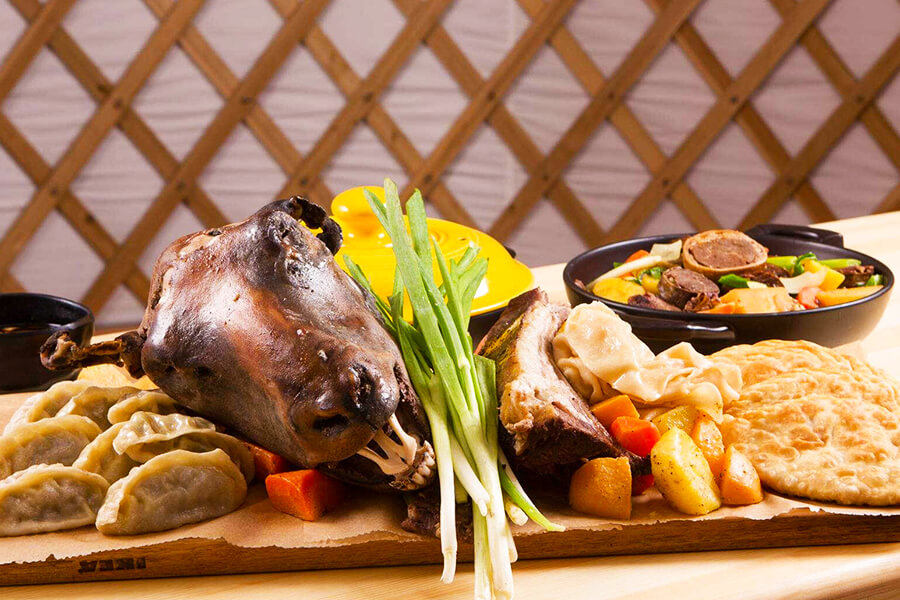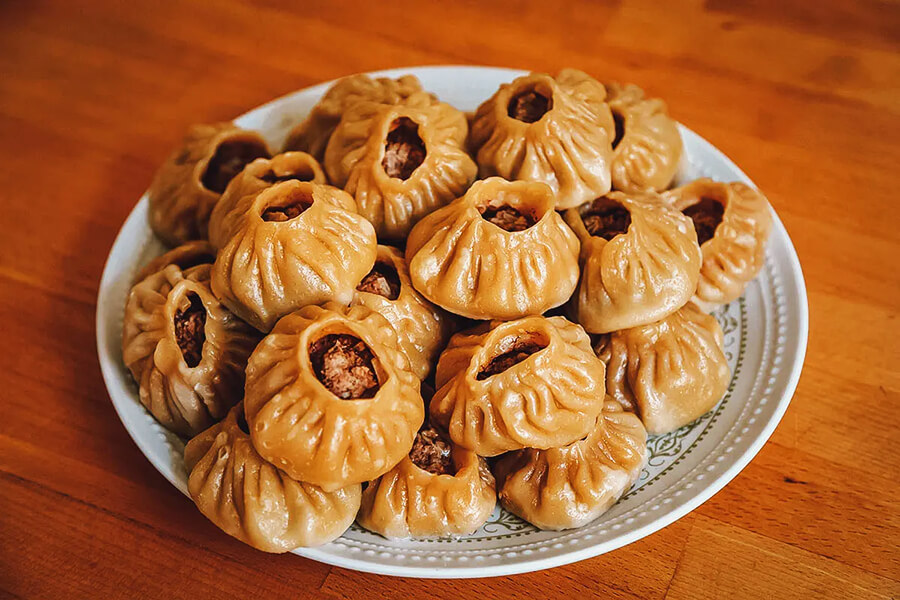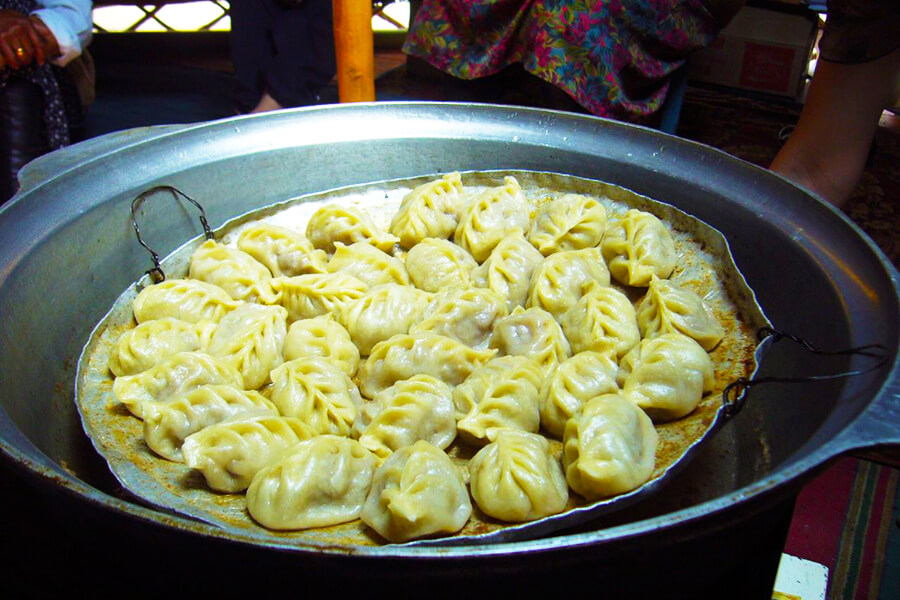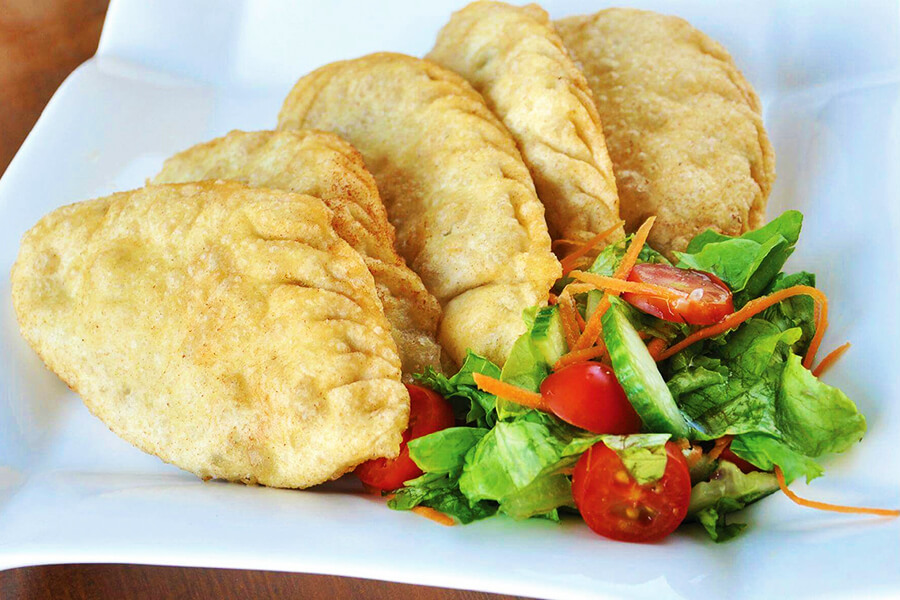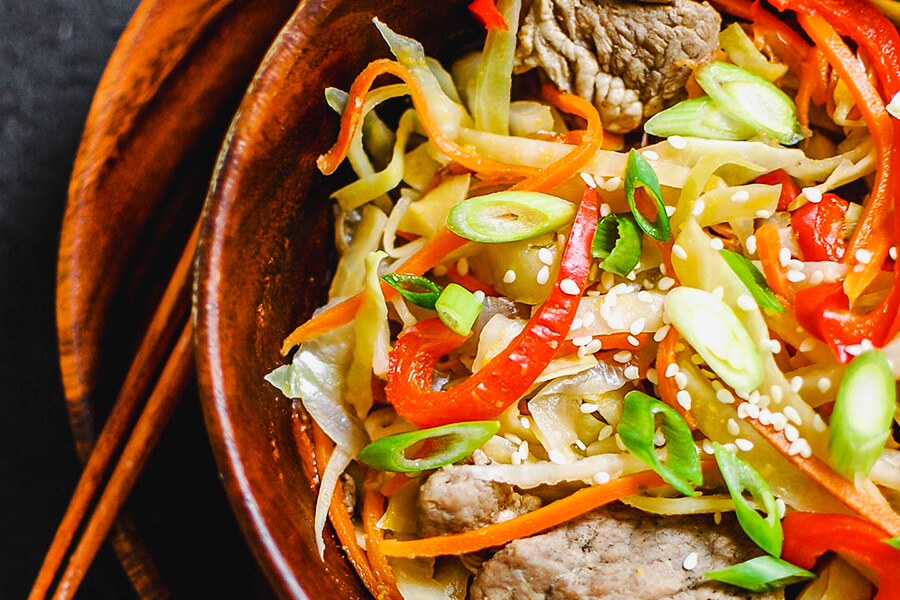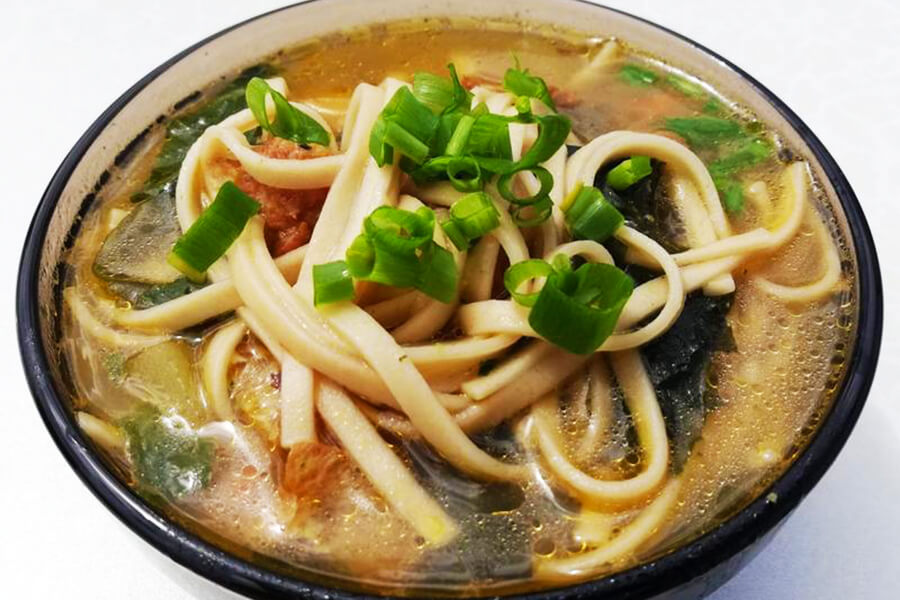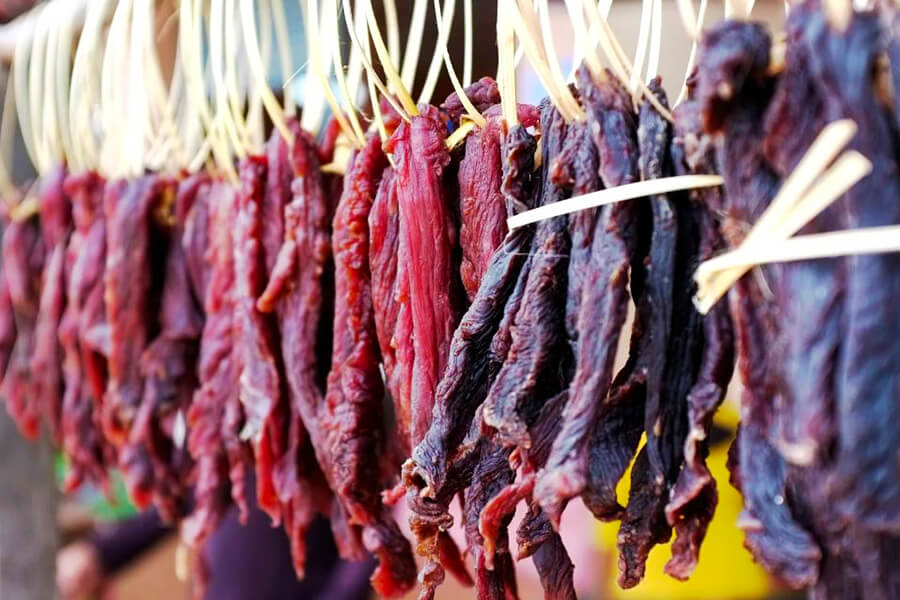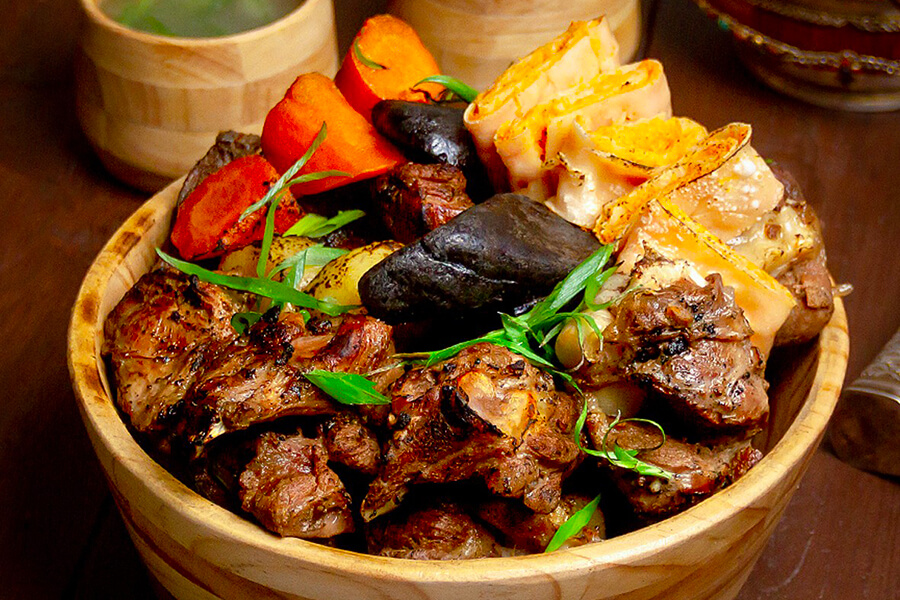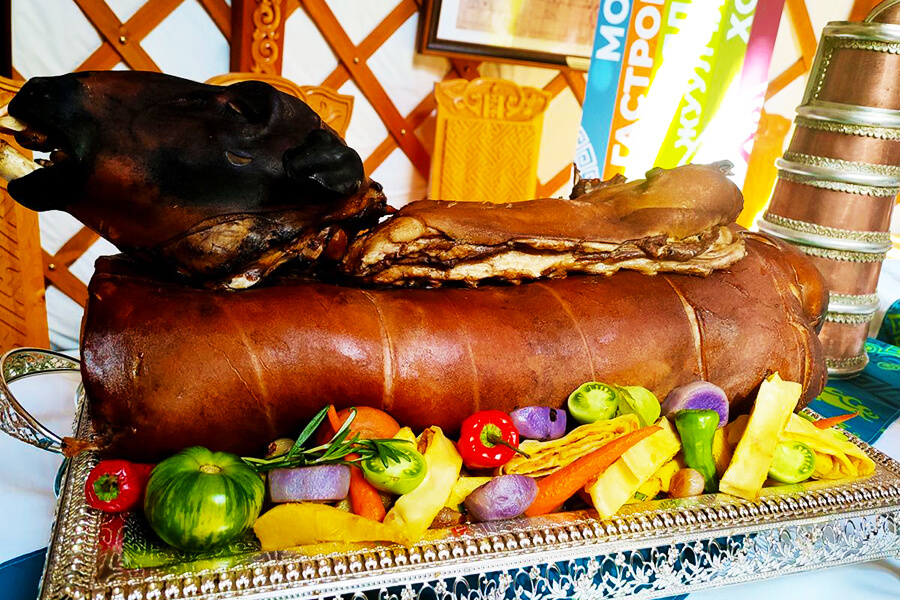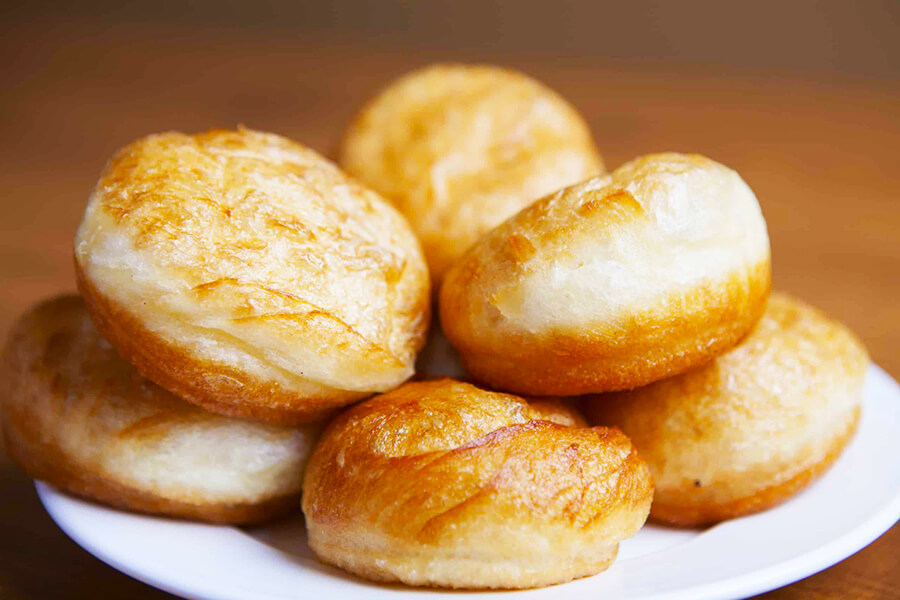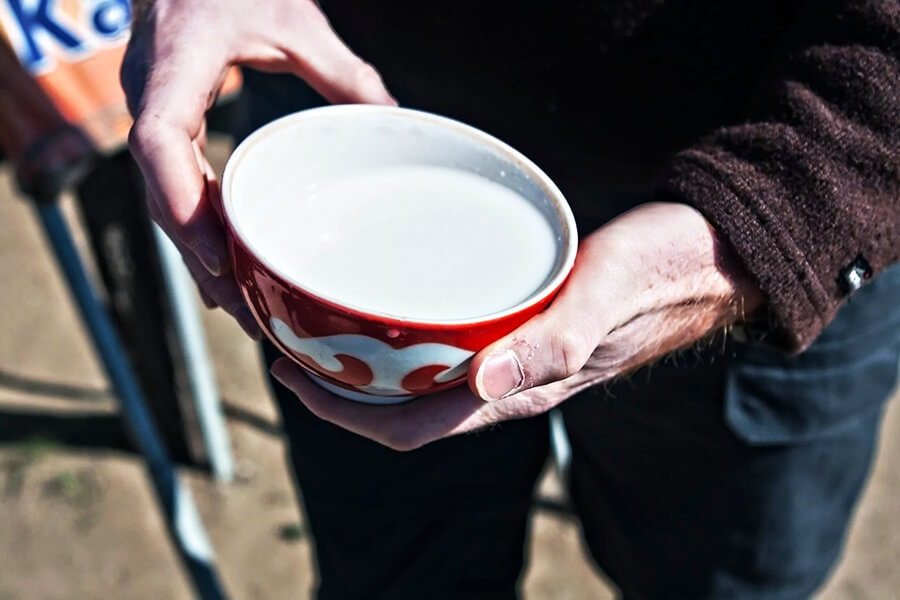If you’re a fan of meat-heavy dishes, then you’re going to enjoy traditional foods in Mongolia. Listed below are ten traditional dishes to try on your next Mongolia tour.
1. Buuz
There’s no better way to start this list of traditional Mongolian foods than with buuz, a popular meat-filled Mongolian dumpling. It’s a Mongolian national dish that’s typically consumed to celebrate the Lunar New Year (Tsagaan Sar).
In winter, the country comes under the influence of the Siberian High so fatty Mongolian foods like buuz help people get through its harsh winters. Recipes vary from cook to cook but the dumplings are usually made with a basic flour dough filled with a mixture of lamb, tail fat, and other ingredients like onions, victory onions, and caraway.
2. Traditional Foods in Mongolia - Bansh
Like buuz, bansh is one of the most popular Mongolian foods. It refers to a smaller type of Mongolian dumpling, about half the size of the average buuz. It can be steamed and eaten on its own or added to Mongolian soups.
One of the most interesting Mongolian dishes made with bansh is banshtai tsai, a type of milk tea with dumplings. Recipes vary but it’s typically made with bansh, water, milk, flour, salt, and tail fat.
Mongolia has a traditional drink called suutei tsai which is tea with milk. If you add bansh into suutei tsai, then it becomes milk tea with dumplings or banshtai tsai. It’s an interesting dish that you need to try in Mongolia.
3. Mongolia Khuushuur
You can think of khuushuur as the Mongolian version of chebureki, a Russian fried pastry filled with seasoned ground meat. It’s a Mongolian dish that was directly influenced by Russian cuisine.
The ingredients for khuushuur are very similar to buuz or bansh but it’s much larger, about 4-6 times bigger than the average buuz. It’s usually shaped in an oval or half-moon and is much oilier than the previous two dumplings because it’s deep-fried.
4. Mongolia Tsuivan
Tsuivan is a type of Mongolian noodle dish made with meat and various vegetables. It’s traditionally made with mutton but other types of meat like beef or pork can be used as well.
To prepare, the dough is rolled out into a round flat sheet and poured over with some oil. It’s then cut into quarters and stacked before being sliced into strips about 0.4 cm (0.15 in) wide.
Tsuivan is one of the most beloved and culturally significant Mongolian foods. Mongolian men love tsuivan so there’s a general saying that a woman’s abilities as a housewife can be determined by how well she makes tsuivan. If she can cook it well, then chances are she’ll make a great housewife.
5. Mongolia Guriltai Shul
No Mongolian food guide can ever be complete without mentioning guriltai shul. It refers to a family of Mongolian noodle soups made with fatty meat like mutton or beef, vegetables, spring onions, root crops, and noodles. The name of this popular Mongolian dish literally means “noodle soup”.
One interesting type you should try is tasalan guriltai shul. It’s a simply seasoned soup made with boiled lamb or beef bones, salt, and short flat noodles cut by hand. In some cases, the flattened sheets of dough are fried first before being cut into strips.
6. Mongolia Borts
Borts refers to the Mongolian version of jerky. Before cold storage was invented, Mongolians would expose fresh meat to the cold air to dry and preserve it. Lamb and horse meat weren’t as suitable for preservation so borts was typically made with beef, goat, or camel meat.
Borts is an ingredient used in soups, dumplings, and many other Mongolian dishes. It was even brought to space as a food source by Mongolia’s first astronaut Jügderdemidiin Gürragchaa. During the era of Genghis Khan, borts was an invaluable food source that provided sustenance to Mongolian soldiers in times of war.
7. Mongolia Khorkhog
Khorkhog refers to a traditional Mongolian barbeque. It’s typically made with lamb or goat meat, vegetables, and root crops cooked in milk churns using heated stones.
To make khorkhog, the meat and vegetables are placed in a milk churn which is used like a pot. To facilitate the cooking process, river stones are heated in a fire and added to the pot, followed by water which produces steam to cook the vegetables and meat. It’s a method of cooking that was invented by nomadic Mongolian tribes and is still used by families living in the countryside.
8. Mongolia Boodog
One of the most intriguing meals on our list is boodog. It alludes to a distinctive way of cooking meat in Mongolia.
In contrast to khorkhog, boodog does not cook the meat in a milk churn or saucepan. In actuality, it makes no use of any kind of cookware. Instead, the flesh is cooked within the skin of the animal to make boodog.
Mongolian nomadic soldiers rode horses to carry what they could. They came up with a way of cooking meat and vegetables using the animal's corpse as they couldn't be weighted down by heavy cookware.
Originally, any kind of animal could be used to make a boodog, but nowadays, only lamb or goat can be used. Getting the flesh, bones, and organs out without rupturing the coat was the most challenging task. After seasoning, the meat is placed back into the corpse along with veggies, hot river rocks, and water. The carcass is then sealed to cook the meat.
Traditionally, boodog was roasted over an open flame to sear the fur, but nowadays, cooks use blowtorches instead. Any remaining fur is removed with a knife. You'll know the boodog is cooked and ready to eat when the sealed-off aperture begins to leak with hot grease.
In Mongolia, boodog is a traditional meal that is highly regarded. Indeed, the Mongolians have a proverb that states, "People who cook and eat Boodog together will become best friends forever."
9. Mongolia Boortsog
Despite the fact that meat is a major component of Mongolian cuisine, you should also try some other foods. Among them is Boortsog. It describes a specific style of fried dough snack favored in Mongolia and nations in Central Asia including Kazakhstan, Kyrgyzstan, and Uzbekistan.
Boortsog recipes vary, but they are often created using a dough that includes flour, butter, water, salt, and sugar. Before being deep-fried to a golden brown, the dough is sliced and molded into a variety of forms, such as spheres, rectangles, or strips. When they're done, you may eat them simply with tea or pair them with cheese, butter, or honey.
10. Mongolia Airag
Fermented mare's milk is referred to as airag (or ayrag). It is Mongolia's customary national libation. Fresh mare's milk is filtered through cloth to create airag, which is then poured into a khukhuur, a kind of leather bag. Until the milk is ready to drink, it is regularly agitated for one to two days using a wooden masher called a buluur. It is frequently the first drink served to guests as a sign of welcome. It has a somewhat acidic yet pleasing taste.
A well-known rich source of vitamins and minerals, the airag has a 2% alcohol concentration.

